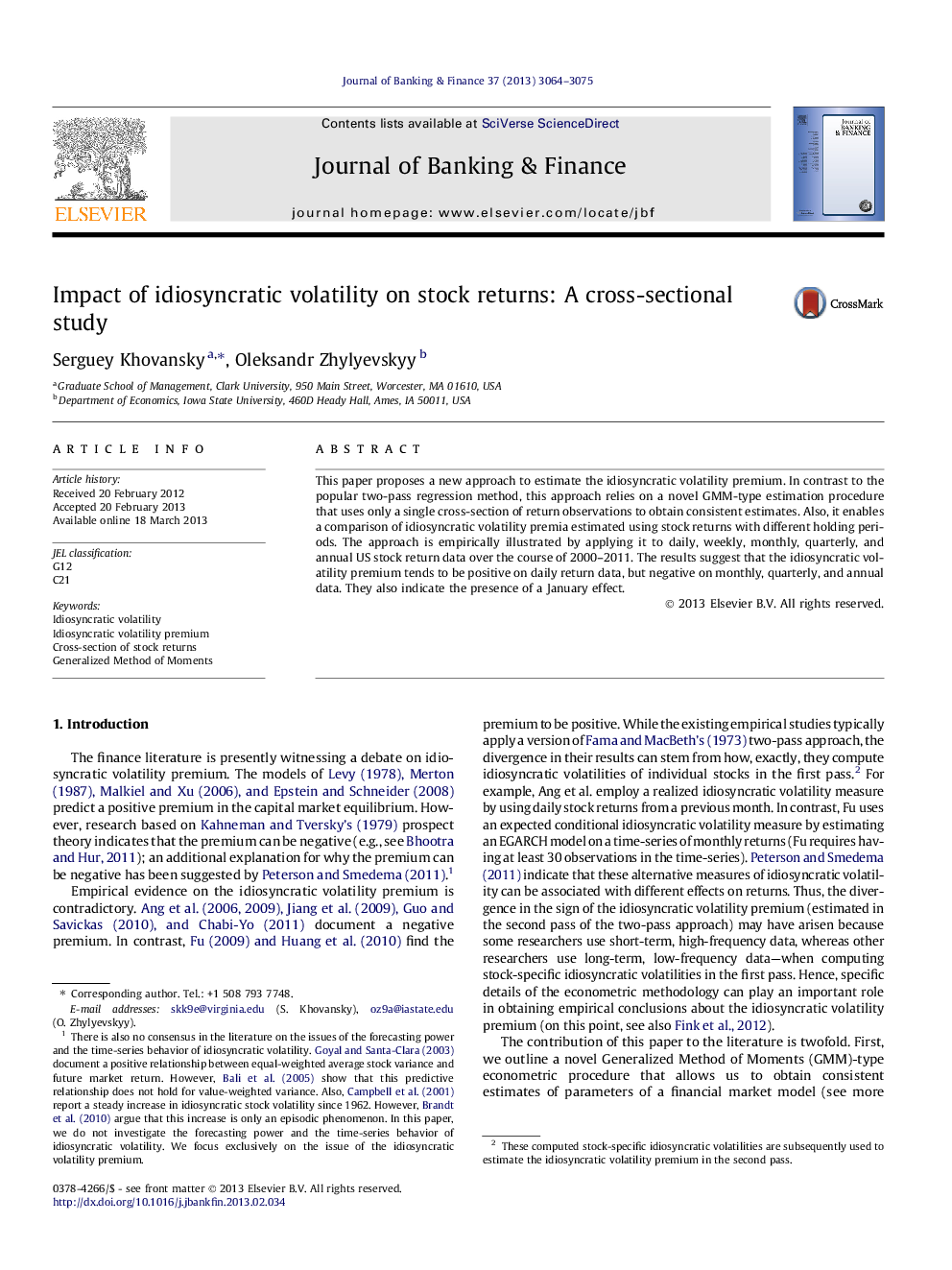| Article ID | Journal | Published Year | Pages | File Type |
|---|---|---|---|---|
| 5089297 | Journal of Banking & Finance | 2013 | 12 Pages |
Abstract
This paper proposes a new approach to estimate the idiosyncratic volatility premium. In contrast to the popular two-pass regression method, this approach relies on a novel GMM-type estimation procedure that uses only a single cross-section of return observations to obtain consistent estimates. Also, it enables a comparison of idiosyncratic volatility premia estimated using stock returns with different holding periods. The approach is empirically illustrated by applying it to daily, weekly, monthly, quarterly, and annual US stock return data over the course of 2000-2011. The results suggest that the idiosyncratic volatility premium tends to be positive on daily return data, but negative on monthly, quarterly, and annual data. They also indicate the presence of a January effect.
Related Topics
Social Sciences and Humanities
Economics, Econometrics and Finance
Economics and Econometrics
Authors
Serguey Khovansky, Oleksandr Zhylyevskyy,
